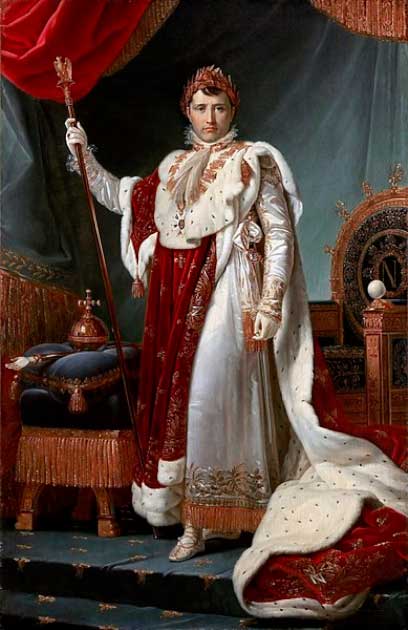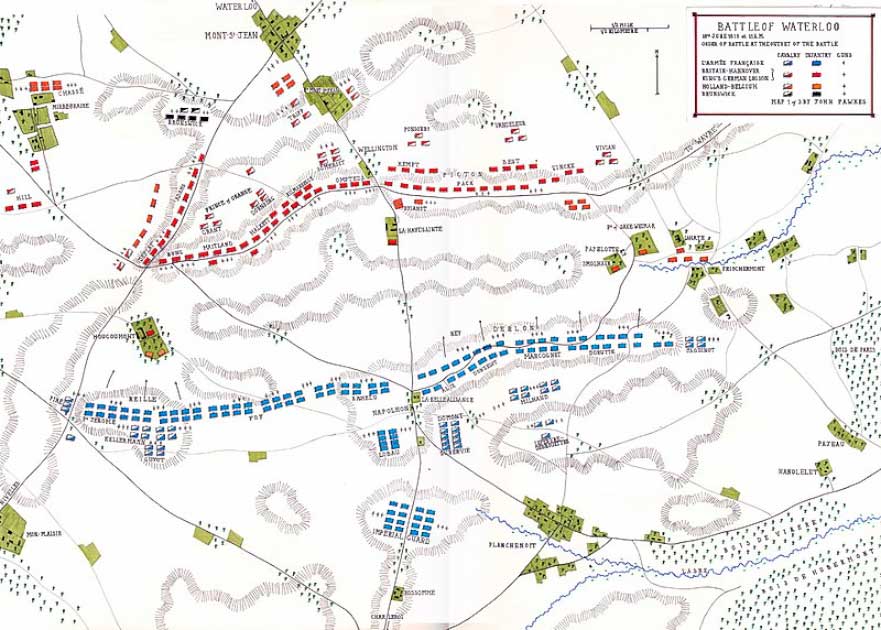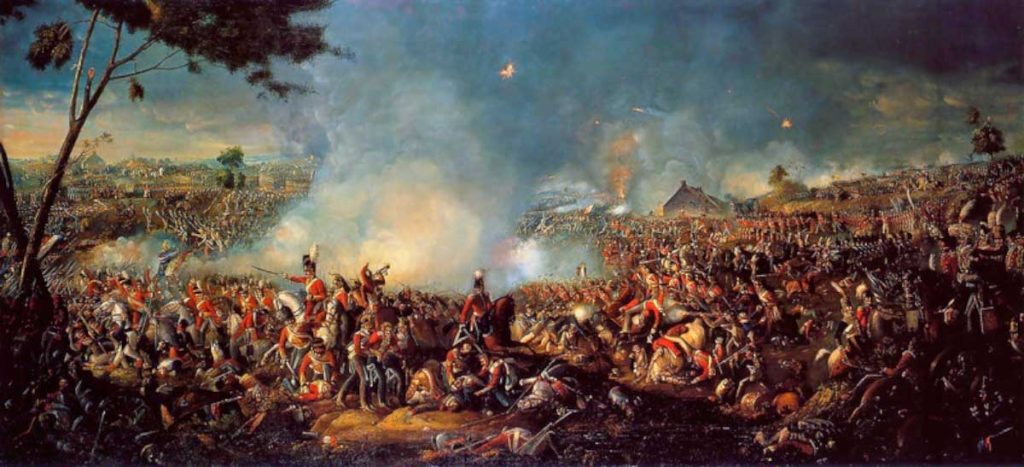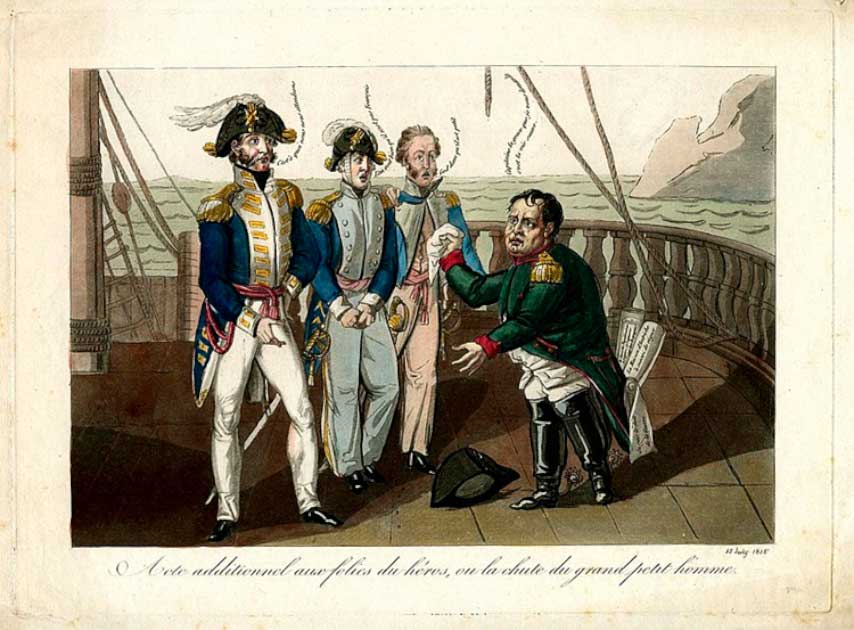Napoleon is one of the great individuals of history. From a lowly Corsican artillery captain thrown into the tumult of post-revolutionary France, he rose to become its emperor and to terrorize Europe, plunging it into war for a decade.
Many have been fascinated by Napoleon’s personality. His supreme self-belief and confidence, his strategic situational awareness and his willpower combined to create a brilliant leader, but it is on the battlefield that we find his true genius. For many years he seemed nigh undefeatable.
So, how was he defeated at Waterloo? Clearly this was catastrophic for Napoleon, even coining the phrase “meet their Waterloo” as a byword for crushing defeat and destruction. How did the French general-cum-emperor lose his final battle near this small village in Belgium?
Napoleon arrived there with more men than his opponents and he clearly believed victory was within his grasp. His soldiers were battle-hardened and filled with loyalty for their returning emperor. Did Napoleon finally fail due to overwhelming opposition, his own error, or something else?
A Brilliant Commander
Napolean Bonaparte rapidly rose to fame as one of the greatest strategists through the ranks of the French Revolutionary Army in the late 1790s. By 1799, France had long been at war with the majority of Europe and Napoleon, was returning from his Egyptian campaign to take control of the French Government.
The government structure was on the brink of collapse and Napoleon was called back to take the reins and save his nation, a task he clearly thought himself equal to. Taking on the classical role of consul in February of 1800, Bonaparte reorganized the armies and defeated the large empire of Austria.

In 1802, he created the Napoleonic Code which was a new system of French law, and in 1804 he was crowned Emperor of France in the Notre Dame Cathedral. He then threw himself into conquest, and such were his successes that by 1807, France controlled an empire stretching from the river Elbe which crossed through Germany down to Italy in the south.
Cracks did start to appear however, and most historians agree that by 1812, Napoleon began to experience his first difficulties and defeats in his military career. He had made the disastrous decision to invade Russia during the winter and lost Spain to the British through the Duke of Wellington in the Peninsula War.
Napoleon was finally totally defeated by 1814. Due to this, he was exiled to the Island of Elba off the coast of Tuscany in the Mediterranean. This was not enough to hold Napoleon though, who escaped to France by 1815 and began his next regime. The French soldiers sent to intercept him famously chose instead to join with him, and Napoleon was once again a force in Europe.
- Psychological Observations of Napoleon Bonaparte
- The Sacro Catino: Did Napoleon break the Holy Grail?
In response to the horrifying news of the return of the little tyrant, allied troops began to muster on the French frontiers, intended to depose him once again. In response Napoleon raised a new Grand Army which he marched into Belgium.
He planned to defeat the allied armies individually, preventing them from uniting and becoming a deadly force. This campaign started well. On June 16th Napoleon defeated the Prussian army governed by Gebhard Lebrecht von Blucher at Ligny.

He sent around 33,000 of his troops, about one-third of his force, to rout them. Meanwhile, on June 18th, he led his remaining troops, around 72,000, against the Duke of Wellington who had amassed around 68,000 men.
They came face to face just south of Brussels near the village of Waterloo.
Positions of the Armies
In fairness, the position of the British was a very strong one. The Duke of Wellington took advantage of a long ridge running east-west which was bisected by the main road, to position his troops. There was a large and easily visible elm tree that was at the center of Wellington’s forces that was used as his command post for the battle. Wellington deployed his infantry in a line just behind the crest of the ridge, out of sight of the French forces.
In doing so Wellington concealed the strength of his force from Napoleon, by using the reverse slope of the ridge. He only revealed his skirmishers and artillery and kept the length of his lines across the battlefield quite small, wanting to appear weaker than he was.
Instead of presenting a broad front, Wellington brought his forces in depth and particularly reinforced the center and the right. He planned on the Prussians arriving later in the day and reinforcing his left.
His forces were anchored by the chateau of Hougoumont on the right, and on the left by the hamlet of Papelotte. Wellington reinforced both of these which meant that any attacking force would have to circumnavigate these to attack the British forces.
The French, on the other hand, formed up on the slopes of the other ridge to the south. As Napoleon could not see Wellington’s position, he attempted to form up symmetrically. They were not without their own fortified spaces. The French had the Bois de Paris wood and the Rossomme farm.
The Battle
The day itself saw several bad decisions by Napoleon. It was strange that the great general would fall into Wellington’s trap: his canniness on the battlefield should have led to prudent scouting of the area, but he did not seem aware of the danger. Perhaps it was desperation.

Napoleon made an even more terrible military mistake on the first day of the battle. He did not attack until midday as he waited for the ground to dry. The weather was awful, with buckets of rain falling the day before. This delay in the battle allowed for the Prussian forces to arrive on the battlefield while the battle was still ongoing.
- The Great Stock Exchange Fraud: Lord Cochrane’s Napoleonic Lies?
- Was Napoleon Poisoned by his Wallpaper?
Napoleon repeatedly attacked the center of Wellington’s forces but the hidden troops and the defense in depth meant he failed to break them. This gave time for the Prussians to gradually arrive and begin to pressure the French’s eastern flank.
Despite the French holding the key strategic farmhouse in the thick of the fighting, and decimating Wellington’s troops using artillery, they then allowed themselves to become preoccupied with the Prussians. This distraction allowed Wellington to organize his defense and repulse the French.
The turnaround was swift. Given just fifteen minutes of respite, the British reorganized and began to advance while the Prussians attacked from the East. The French panicked and began a disorganized retreat.
The loss at Waterloo was tremendous. The French had 25,000 killed and injured and 9,000 captured. The allies lost around 23,000. This crushing defeat broke any momentum that Napoleon had built up since his return.
Knowing that he was on the back foot, he returned to France where he abdicated in terms of his son. This was not his only problem. Counterrevolutionary forces began to mount and so Napoleon fled to the protection of the British at Rochefort. They banished him to St. Helena where he died six years later.
Napoleon’s Waterloo
Few figures in history have experienced defeat at the level that Napoleon did. He was in his absolute pomp when he went into the battle. He had taken on most of Europe and won.

Even when he lost, he showed that he could rally and return with a sizeable force enough to conquer Europe. However, after Waterloo, he collapsed both physically and politically. It is no surprise that his legacy is his greatest defeat.
Why did he wait for the ground to dry? Why did he not adequately scout the battlefield and gain an understanding of the disposition of the British troops? Why did he switch his focus to the Prussians, allowing the British to regroup?
Could Napoleon have won Waterloo? Wellington himself described the battle as the closest run thing he ever saw in his life. And it is certain that, if the French had won that day, the history of Europe would be very different.
Top Image: Napoleon, seated at a farmhouse kitchen table, contemplates his total ruin after the defeat at Waterloo. Source: François Flameng / Public Domain.
By Kurt Readman